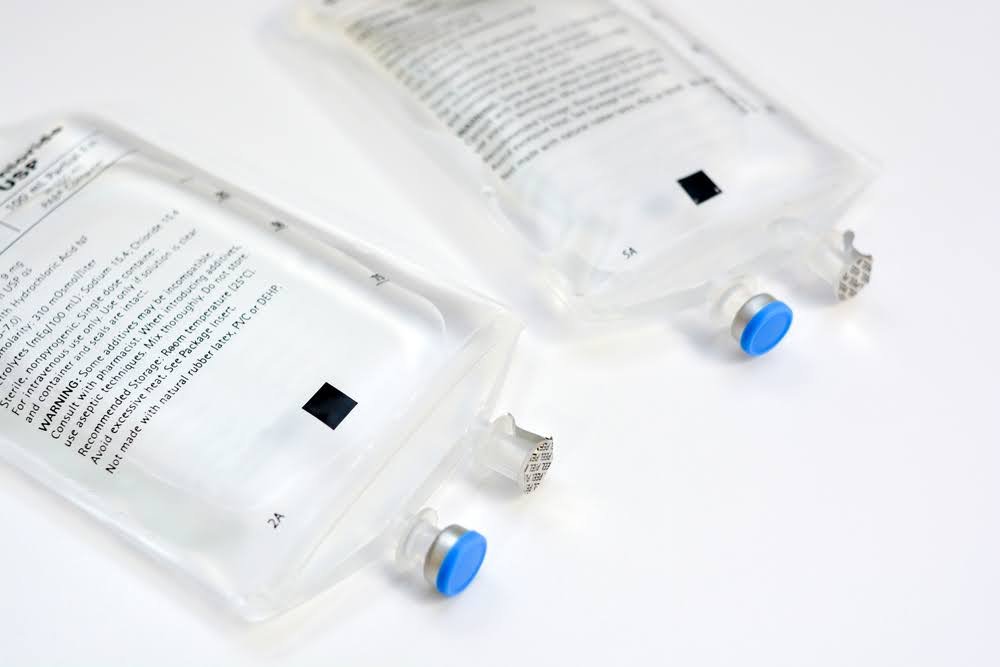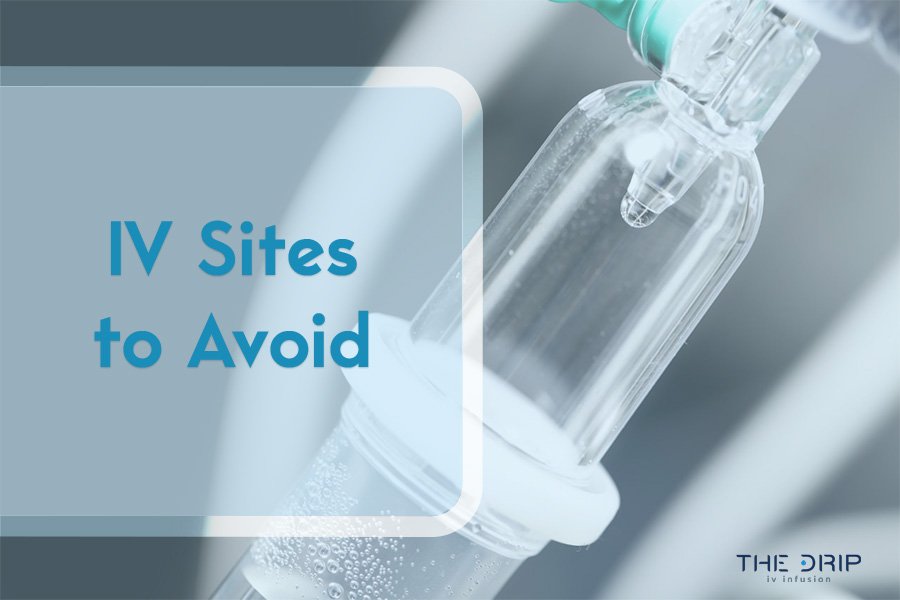Many people have been in a situation where they need crystalloid IV fluids due to severe dehydration or illness. IV fluids are essential for maintaining fluid balance and are administered in medical settings to help restore fluid balance.
In this article, you will better understand the answer to the question of what are crystalloid IV fluids, their types, and their uses as well as possible complications of overusing them and how to manage them in different cases. Understanding these factors will help patients and healthcare providers make informed decisions regarding the utilization of crystalloid IV fluids.

Source: shutterstock.com / Photo Contributor: ANDRANIK HAKOBYAN
What Are Crystalloid IV Fluids?
Crystalloid IV fluids are solutions used in medicine for intravenous administration to provide electrolyte balance and supply energy. They are commonly used for the treatment of dehydration and are often administered as an after surgery care. These fluids are composed of water and electrolytes, which help with hydration, regulate nerve and muscle function, and balance blood acidity and pressure.
Fortunately, you can now receive crystalloid IV fluids from the comfort of your own home or office. Many medical centers in Arizona utilize advanced intravenous solutions to ensure optimal patient care. For those seeking convenient and prompt treatment, the best mobile IV therapy Arizona offers flexible and high-quality care wherever you are located.
Crystalloid IV fluids, a major type of IV fluid, are classified based on their composition and intended use. They’re typically divided into several groups:
Isotonic solutions
Hypotonic solutions
Hypertonic solutions
Some of the main crystalloid IV fluid examples are 0.9% NaCl (normal saline), 0.45% NaCl (half-normal saline), D5W (5% dextrose in water), D5NS (5% dextrose in normal saline), 3% NaCl (hypertonic solution), lactated Ringer/Hartman solution (lactate buffered solution), acetate buffered solution, and acetate and gluconate buffered solution.
Types of Crystalloid IV Fluids
Intravenous solutions generally consist of tiny molecules that easily pass through semipermeable membranes. The tonicity of these IV solutions, or their ability to affect the movement of water across cell membranes, is crucial in their classification.
Based on how their tonicity compares to that of blood plasma, IV solutions are categorized into three types: isotonic, hypotonic, and hypertonic. Understanding these categories helps medical professionals choose the appropriate solution for patient care.
Isotonic solutions
Isotonic solutions are fluids that match the solute concentration of cells and blood plasma, resulting in no net movement of water across cell membranes. This balance is crucial because it prevents cells from either swelling (as they would in hypotonic solutions) or shrinking (as they would in hypertonic solutions). The osmolarity of isotonic solutions mirrors that of human blood plasma.
Common examples of isotonic solutions include normal saline and lactated Ringer’s solution. These solutions are frequently used in medical settings for rehydration, maintaining blood volume during surgery, treating hypovolemic shock, and as a medium for intravenous medications. Their primary benefit is restoring and maintaining fluid balance without disturbing cellular function.
Hypotonic solutions
Hypotonic solutions have a lower solute concentration compared to the fluid inside cells. This difference causes water to move into cells, leading them to swell and potentially burst.
Common hypotonic solutions are 0.45% saline and D5W. It’s often administered to patients with conditions such as hypernatremia, where there is an excessive amount of sodium in the blood. By diluting the extracellular fluid, hypotonic solutions help lower sodium levels and rehydrate cells.
In medical practice, careful monitoring of these solutions is crucial to avoid complications like cell swelling or water intoxication, which can lead to serious health issues such as cerebral edema.
Hypertonic solutions
Hypertonic solutions have a higher solute concentration than the fluid inside cells, which causes water to move out of the cells and results in cell shrinkage.
Common examples of hypertonic solutions include 3% saline and D5NS. They’re used in medical treatments to address conditions like hyponatremia (low blood sodium levels), help provide both fluid and calories while drawing water out of cells, and to reduce intracranial pressure in cases of brain swelling.
While effective, hypertonic solutions must be administered carefully to avoid complications such as dehydration and electrolyte imbalance.
Uses of Crystalloid IV Fluids
Crystalloids have a range of applications in medical practice. They are commonly used to treat dehydration and improve patients’ nutritional intake. They’re also employed in various IV therapies to address conditions such as anxiety, hangovers, and pregnancy-related issues.
Their purpose can be summed up in the following main practices:
Hydration –intravenous solutions may be the most effective method for replenishing bodily fluids in cases of blood loss, severe dehydration, surgery, or similar situations. Their primary purpose is to ensure consistent fluid levels and immediate hydration when needed.
Medication delivery – in emergencies, accidents, and surgeries, crystalloid solutions are highly beneficial. Administering these solutions intravenously allows for the direct absorption of medications into the patient’s system, leading to a more efficient and effective treatment process.
Electrolytes maintenance – IV fluids help maintain normal levels of electrolytes, including sodium, potassium, and calcium. Proper electrolyte balance is crucial for preventing serious complications like shock or organ failure. Common electrolyte-supplying solutions include 0.9% NaCl, Ringer’s Solution, and others.
Nutritional support – when oral intake is not possible, IV fluids provide essential nutrients, including minerals, vitamins, glucose, and electrolytes. This intravenous delivery may boost the patient’s energy and support overall health. A well-known nutritional solution is D5W.

Source: shutterstock.com / Photo Contributor: AlteredR
Conclusion
Crystalloid fluids are essential in many health-related situations, including hydration, electrolyte balance, volume expansion, medication delivery, and nutritional support. Discovering the answer to the question of, what are crystalloid IV fluids, their uses, delivery methods, possible adverse effects, and proper application is crucial for healthcare practitioners involved in fluid management.
By implementing a patient-centered strategy and closely monitoring the patient’s reaction to treatment, crystalloid IV fluids can be efficiently used to restore and sustain fluid equilibrium while enhancing the patient’s well-being.




